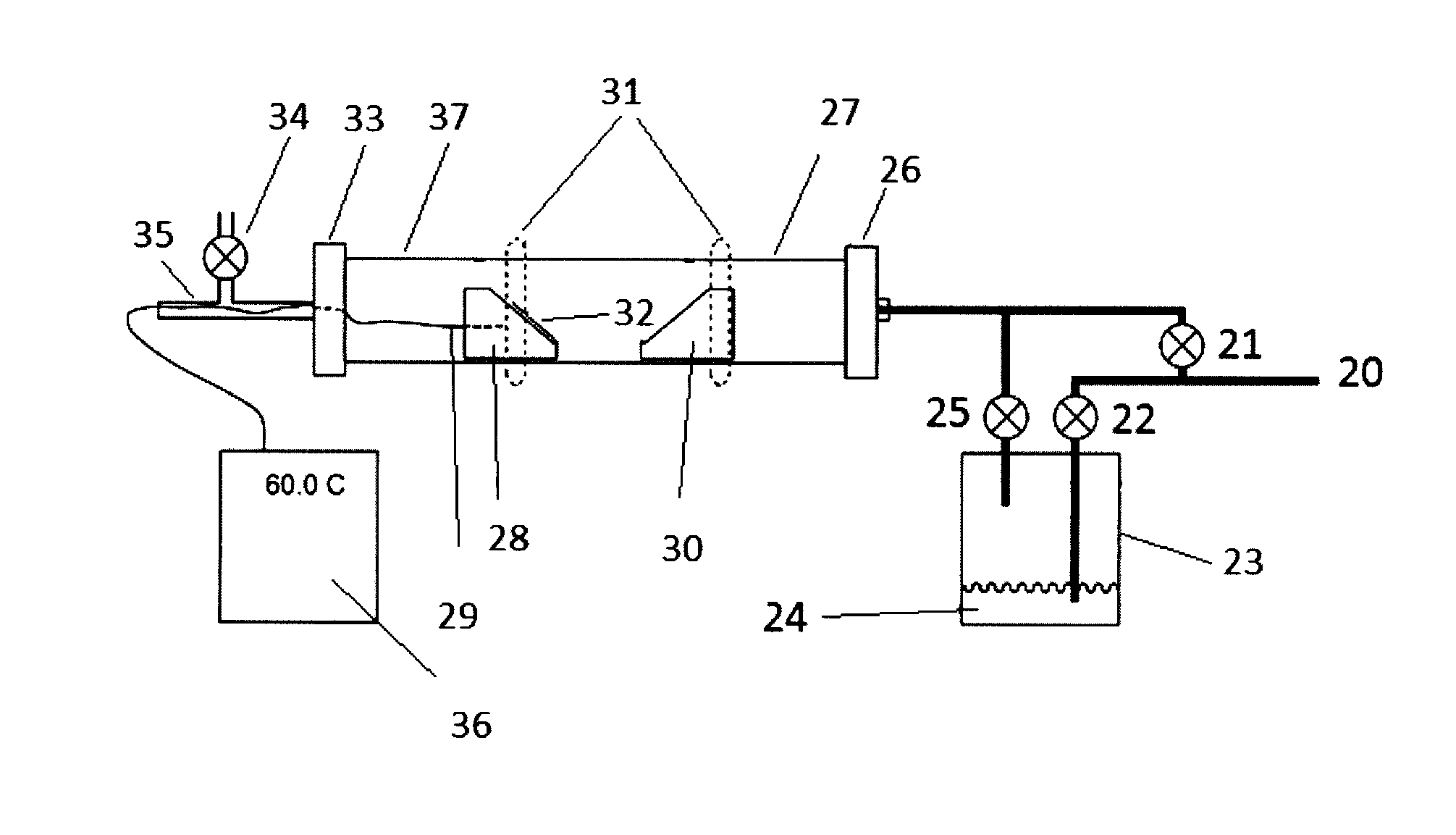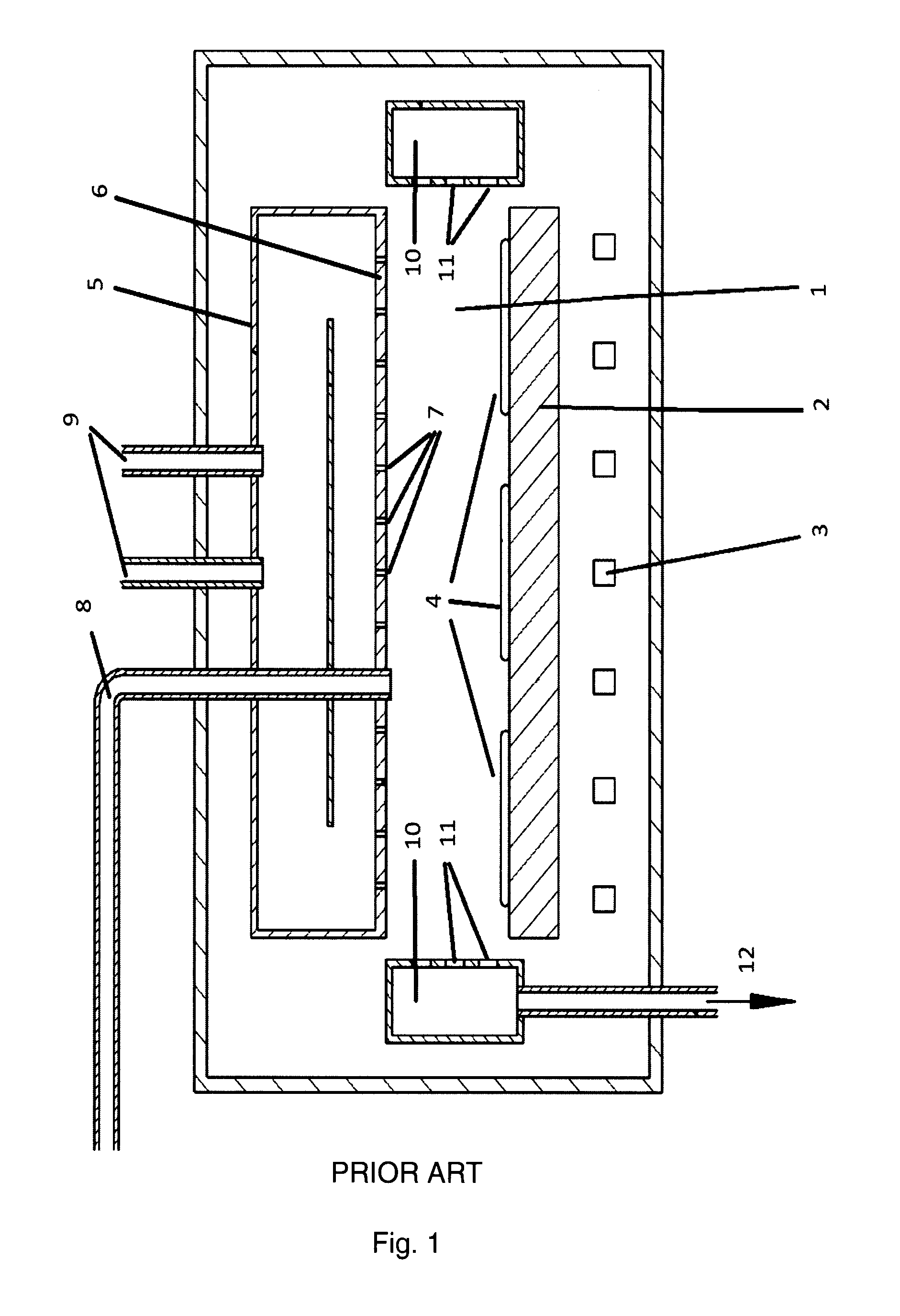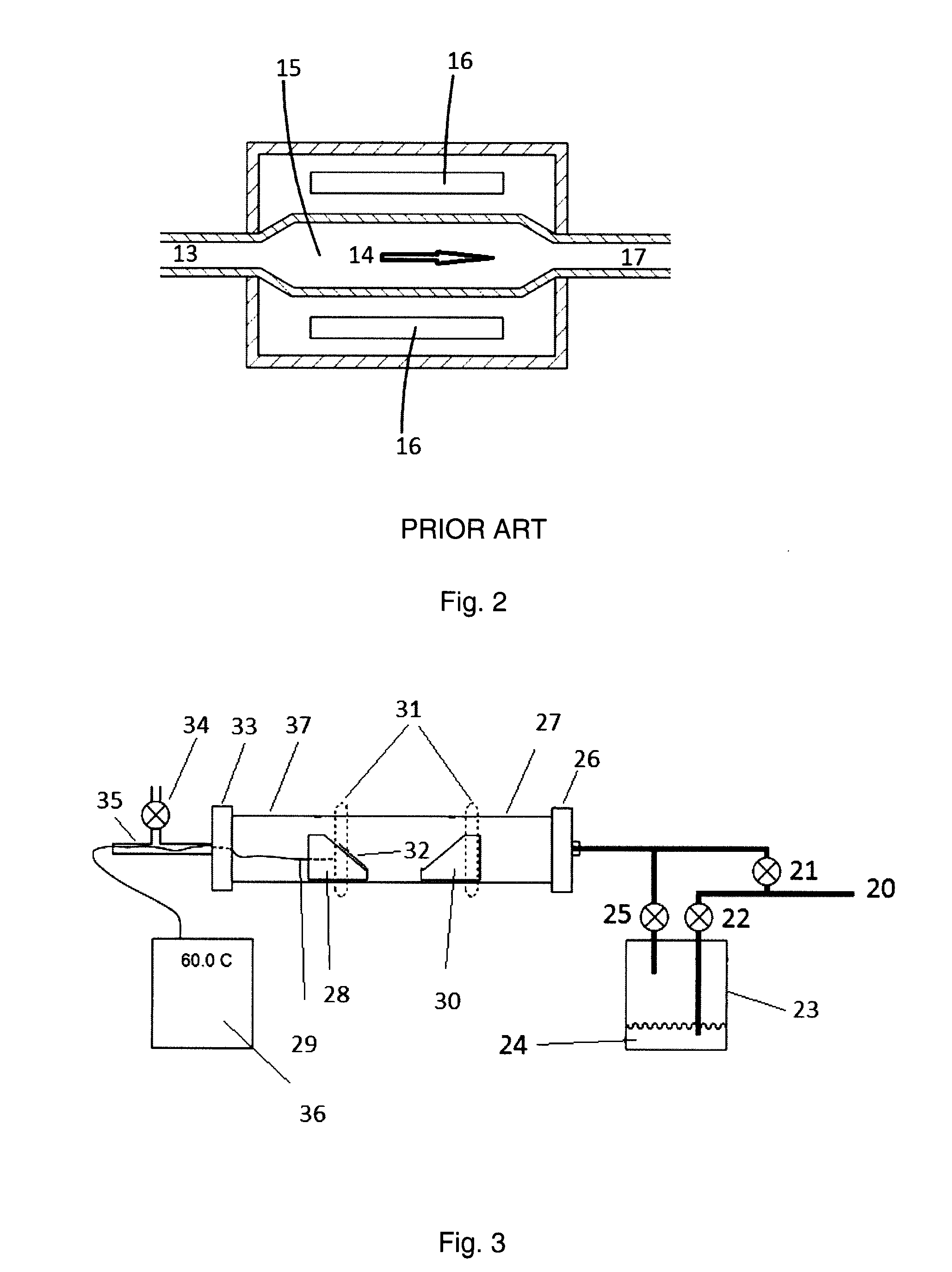Process and method for in-situ dry cleaning of thin film deposition reactors and thin film layers
a technology of thin film deposition reactor and in-situ dry cleaning, which is applied in the direction of electrostatic cleaning, chemical vapor deposition coating, ion implantation coating, etc., can solve the problems of contaminated reactant gases flowing through the reactor chamber, low yield or complete loss of wafers, and time-consuming, etc., to achieve efficient dry etching
- Summary
- Abstract
- Description
- Claims
- Application Information
AI Technical Summary
Benefits of technology
Problems solved by technology
Method used
Image
Examples
example 1
SOCl2 200° C.
[0049]A coated substrate 32 was placed on the first substrate holder 28. The substrate 32 was heated with IR heater 31 to 200° C. under a continuous carrier gas (Ar) flow through the reactor chamber 27 from the gas inlet 20 and direct input valve 21. Once the substrate reached a temperature of 200° C., the flow of the carrier gas was diverted through bubbler valve 22 into bubbler 23 containing reagent 24 (SOCl2), such that SOCl2 was picked up in the carrier gas, forming an etchant gas. The etchant gas entered the reactor chamber 27 through valve 25, passed over the substrate 32 and etched away the deposit on the stainless steel substrate 32. The reaction was very rapid over the first five minutes, and then proceeded more slowly, such that the etching process took 10-13 minutes to clean the substrate to a shiny stainless condition. The by-products, which were mainly GaCl3 and SO2, were collected in the cooled area 37 of chamber 27.
example 2
SOBr2 200° C.
[0050]A coated substrate 32 was placed on the first substrate holder 28. The substrate 32 was heated with IR heater 31 to 200° C. under a continuous carrier gas (Ar) flow through the reactor chamber 27 from the gas inlet 20 and direct input valve 21. Once the substrate reached 200° C., the flow of the carrier gas was diverted through bubbler valve 22 into bubbler 23 containing reagent 24 (SOBr2), such that SOBr2 was picked up in the carrier gas, producing an etchant gas. The etchant gas entered the reactor chamber 27 through valve 25, passed over the substrate 32 and etched away the deposit on the stainless steel substrate 32. The reaction was very quick and efficient, cleaning the substrate completely within 7-9 minutes. The by-products, which were mainly GaBr3 and SO2, were collected in the cooled area 37 of chamber 27.
example 3
SOBr2 200° Preheat 300° C.
[0051]A coated substrate 32 was placed on the first substrate holder 28. The substrate 32 was heated with IR heater 31 to 200° C. under a continuous carrier gas (Ar) flow through the reactor chamber 27 from the gas inlet 20 and direct input valve 21. The second substrate holder 30 was heated to 300° C. with the IR heater 31. Once the appropriate temperatures were reached, the flow of the carrier gas was diverted through bubbler valve 22 into bubbler 23 containing reagent 24 (SOBr2), such that SOBr2 was picked up in the carrier gas, and an etchant gas was produced. The etchant gas entered the reactor chamber 27 through valve 25, was thermally activated as it passed over the substrate holder 30, passed over substrate 32 and etched away the deposit on the stainless steel substrate 32. The reaction was very quick and efficient, cleaning the substrate completely within 3-5 minutes. The by-products, which were mainly GaBr3 and SO2, were collected in the cooled ar...
PUM
| Property | Measurement | Unit |
|---|---|---|
| temperature | aaaaa | aaaaa |
| temperature | aaaaa | aaaaa |
| temperature | aaaaa | aaaaa |
Abstract
Description
Claims
Application Information
 Login to View More
Login to View More - R&D
- Intellectual Property
- Life Sciences
- Materials
- Tech Scout
- Unparalleled Data Quality
- Higher Quality Content
- 60% Fewer Hallucinations
Browse by: Latest US Patents, China's latest patents, Technical Efficacy Thesaurus, Application Domain, Technology Topic, Popular Technical Reports.
© 2025 PatSnap. All rights reserved.Legal|Privacy policy|Modern Slavery Act Transparency Statement|Sitemap|About US| Contact US: help@patsnap.com



